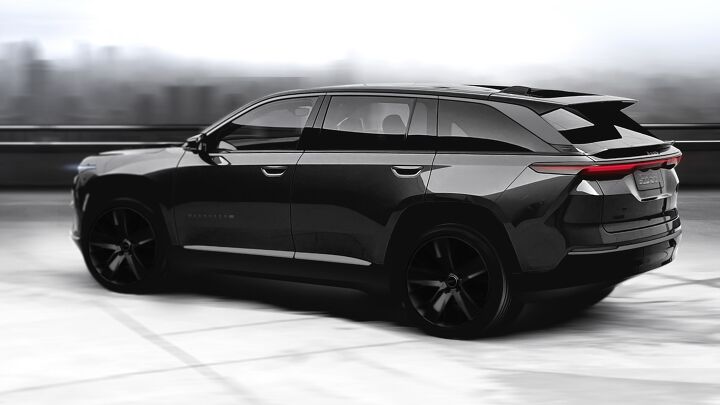Stellantis Vehicles Should Jump to Tesla's NACS Starting in 2026 UPDATED

Stellantis has been slow to roll out new electric models, so it’s not surprising to see the automaker being one of the last to join Tesla’s North American Charging Standard. That changed yesterday, as the automaker announced that it would begin offering the tech on some electrified vehicles starting in 2026.
We’ll see several new EVs from the automaker starting this year, from the Jeep Wagoneer S to the Ram 1500 REV. Though it doesn’t currently have a fully electric vehicle in the U.S. now, Jeep sells two plug-in hybrids, Chrysler has a PHEV minivan, and there are also the Dodge Hornet and Alfa Romeo Tonale PHEV twins. Those vehicles will should be able to use an adapter to charge on Tesla’s Supercharger network, while future models will get NACS charging ports at the factory.
Tesla’s charging network not only expands the number of available chargers to outside brands, but it’s generally viewed as offering a more reliable and seamless public charging experience, something every EV owner wants. At the same time, Stellantis is one of several automakers partnering to develop a separate charging network.
Called Ionna, the joint venture aims to build 30,000 chargers by the end of the decade, and they will be brand-agnostic, meaning any EV can charge. Improving the charging experience, including the availability of chargers, is a vital step needed to ensure continued EV adoption.
Editor's Note -- Stellantis reached out after publication to clarify that the listed vehicles should be able to charge with the Tesla standard, as opposed to "will." We've changed the wording and headline to reflect this.
[Image: Jeep/Stellantis]
Become a TTAC insider. Get the latest news, features, TTAC takes, and everything else that gets to the truth about cars first by subscribing to our newsletter.

Chris grew up in, under, and around cars, but took the long way around to becoming an automotive writer. After a career in technology consulting and a trip through business school, Chris began writing about the automotive industry as a way to reconnect with his passion and get behind the wheel of a new car every week. He focuses on taking complex industry stories and making them digestible by any reader. Just don’t expect him to stay away from high-mileage Porsches.
More by Chris Teague
Latest Car Reviews
Read moreLatest Product Reviews
Read moreRecent Comments
- Jalop1991 Our MaintenanceCosts has been a smug know-it-all.
- MaintenanceCosts If I were shopping in this segment it would be for one of two reasons, each of which would drive a specific answer.Door 1: I all of a sudden have both a megacommute and a big salary cut and need to absolutely minimize TCO. Answer: base Corolla Hybrid. (Although in this scenario the cheapest thing would probably be to keep our already-paid-for Bolt and somehow live with one car.)Door 2: I need to use my toy car to commute, because we move somewhere where I can't do it on the bike, and don't want to rely on an old BMW every morning or pay the ensuing maintenance costs™. Answer: Civic Si. (Although if this scenario really happened to me it would probably be an up-trimmed Civic Si, aka a base manual Acura Integra.)
- El scotto Mobile homes are built using a great deal of industrial grade glues. As a former trailer-lord I know they can out gas for years. Mobile homes and leased Kias/Sentras may be responsible for some of the responses in here.
- El scotto Bah to all the worrywarts. A perfect used car for a young lady living near the ocean. "Atlantic Avenue" and "twisty's" are rarely used in the same sentence. Better than the Jeep she really wants.
- 3-On-The-Tree I’ll take a naturally aspirated car because turbos are potential maintenance headaches. Expensive to fix and extra wear, heat, pressure on the engine. Currently have a 2010 Corolla and it is easy to work on, just changed the alternator an it didn’t require any special tools an lots of room.


































Comments
Join the conversation
Are there any holdouts left?
I, SUPER SERIOUS TASSOS, APPROVE OF this.